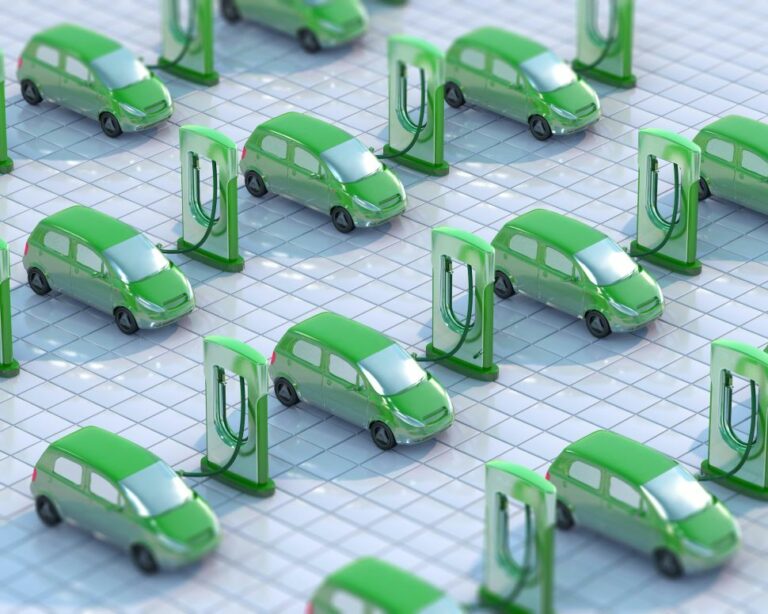Electric Vehicles: Transforming Urban Life
Electric vehicles (EVs) are rapidly becoming a cornerstone of sustainable urban living, improving air quality and lowering transportation-related emissions. In 2023, global EV sales grew by 35%, with U.S. sales rising by over 40%, signaling a dramatic acceleration in adoption. This shift is driven by policy mandates, cost incentives, and growing public demand for cleaner transportation options.

EVs significantly reduce air pollutants like nitrogen dioxide (NO₂) and particulate matter in cities. Studies have shown that regions with high EV penetration see measurable improvements in local air quality, contributing to better public health outcomes. For residents in high-traffic neighborhoods, this means fewer tailpipe emissions, cleaner air, and fewer respiratory issues tied to pollution.
One of the biggest advantages of EVs is their energy efficiency. Unlike gas-powered cars, which waste most of their fuel as heat, EVs use over 75% of their energy to power the wheels. Even when electricity comes from fossil fuels, EVs are still cleaner overall, delivering the emissions equivalent of 70 to 180 miles per gallon.
Addressing Concerns About EV Production
While there are valid concerns about the carbon cost of battery manufacturing, the overall lifecycle emissions of EVs are still lower than those of internal combustion engine (ICE) vehicles. A typical EV battery emits between 2,400 and 16,000 kg of CO₂ during production, but the average gas-powered car emits roughly 43,500 kg of CO₂ over its lifespan. Even in the worst-case scenario, EVs generate less lifetime carbon than ICE vehicles.
Economic Benefits of EVs
Ownership costs also favor EVs. A 2024 study found that EVs can save owners between $7,000 and $11,000 across the lifetime of the vehicle due to reduced fuel and maintenance costs. With fewer moving parts and regenerative braking systems, EVs have lower service requirements compared to ICE vehicles.
Expanding Charging Infrastructure
Range anxiety remains a barrier to adoption, but charging infrastructure is expanding rapidly. There are now over 200,000 public charging ports available across the U.S., with cities seeing growth in on-street and garage charging stations. However, rural communities face slower rollout, and their EV adoption lags behind urban areas.
Policy Support for EVs
Governments worldwide are introducing mandates to phase out gas cars, alongside incentives like tax credits and rebates. The EU plans to phase out new ICE vehicle sales by 2035, and China aims to have EVs comprise 40% of all car sales by 2030. In the U.S., the Inflation Reduction Act provides up to $7,500 in federal tax credits for eligible EVs.
Shaping Healthier Cities
At the city level, these policies can directly translate into cleaner bus routes, low-emission zones, and incentives for residents to make the switch. Major hubs like New York and Los Angeles are electrifying bus fleets and providing grants to small businesses that switch to electric delivery vans. The shift toward electric mobility is redefining how cities combat pollution, adapt to climate change, and build long-term resilience.



